Loved by
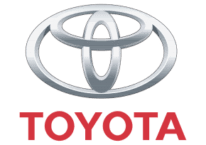
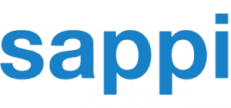



About
Flexible go-to-market support.
Sometimes speed is more important than coaching internal employees. We get it. There are always tradeoffs when building ventures, and you probably want the best possible leader to lead your team at the critical time. You might have tried working with internal project managers, but they didn’t get why you needed to talk to customers, or you might have hired freelancers but couldn’t find one who could work outside a narrow area of expertise.
What you need is someone who is good at customer development, experiment design, and business modeling. Someone who spots gaps in the market and comes up with non-obvious solutions. Someone who can translate solutions into testable assumptions.
We know it’s not easy to find someone who can not only give a presentation about all of the above, but also execute it while leading the team. We’ve been hiring people who fit that profile for 10 years at Board of Innovation, and we have built up a team of serial entrepreneurs who have gone through the venture design process more than 10 times.
With our “entrepreneur in residence” program we can provide a co-entrepreneur who joins your team 1-4 days per week to keep everyone focused.
Most of the time, this person will steer the validation of critical business assumptions in the first months of your new corporate venture.
Result
Strengthening your corporate venture teams' innovation muscles.
Clarity on target customer
Who’s your customer? What is their current situation? What could you improve upon to help them?
Spotting gaps in the market
Is there really an opportunity in the market or are you chasing another flop?
Coming up with non-obvious solutions
The first idea that comes to mind is unlikely to be the best one. Creativity is crucial in this process.
Translating ideas intro testable hypotheses
What are the most critical assumptions about the solution?
Experiment design
What experiment can you run to validate or invalidate the assumptions, requiring the smallest amount of time and money?
Business modelling
What’s a smart way to capture some of the value you are creating to make this initiative worth pursuing?

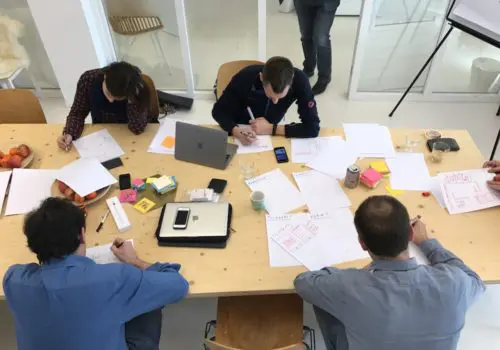

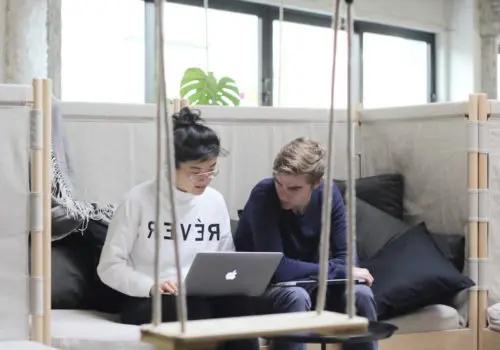

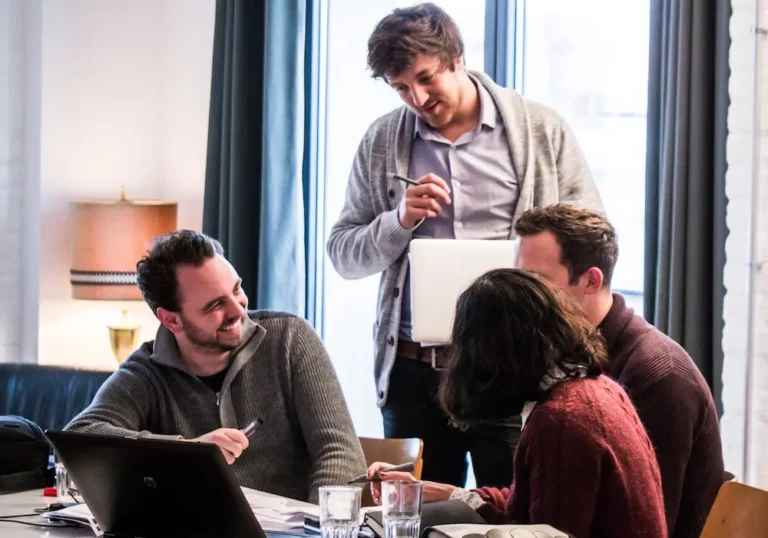
Program overview
Ready to accelerate your venture?
Hire one of our entrepreneurs on a short-term basis to join your core venture team. Our clients usually hire us for a variable period between 1 and 4 days per week. The format we prefer is 4 days a week as this makes the venture move as fast as possible.
Our entrepreneurs have close ties with different startup ecosystems and have the entire global Board of innovation team on speed dial. In order to blend in and find partners, suppliers and other resources to help you out, we will use our extensive network to find a solution.
Our lean entrepreneurs are not standard consultants, but talented people who like to get their hands dirty. They will inject an entrepreneurial mindset to your corporate startup.
Based on the maturity of your venture, we choose the best entrepreneur to fit your needs.
What are the questions that need to be solved for your team?
Does the approach to new initiatives needs to be bottom-up or top-down? How do you set up the team for success? What governance structure do you need? When you select people to participate in your innovation program, what are the right criteria to use? How do you manage expectations within the organization?
Experience supported by a library of tools:
- Scoping matrix (set targets)
- Innovation culture checklist
- Demolition canvas
- How to scope ambitions and goals guide
- Innovation accounting
- Definitions for success criteria
- etc.
Creativity is not just a gimmick. You need a skilled team knows the goal (and limitations) of different creativity techniques. What triggers can be used to unlock creativity, and how? In this context, we also refer to some of the principles used in Design Thinking (such as using empathy to start an ideation process).
Experience supported by a library of tools:
- Analogy thinking templates and examples
- Futurescan model (prediction template / foresight)
- Idea capturing (options and formats)
Online experts a (collection and gathering) - Empathy and user observation
- Where to get inspiration (sources)
In order to move from a high-level idea to a more concrete concept, you’ll need to understand all the underlying assumptions about the idea. In this context, we refer to the Lean Startup and how validated information can be used to improve ideas. What are our options for evaluating the value proposition? One very practical concern is how to find your first test users for your first experiments. The team will make evidence based decisions by default.
Experience supported by a library of tools:
- Solution and problem interviews checklists
Experiment mapping (template) - Innovation battlefield framework
- Paper/digital prototyping tools
- Lean canvas/experiment board
- Experimentation tools (B2B & B2C)
- Evidence based decision making (set priorities)
etc.
As early as possible, you’ll need feedback on the potential value of your projects. How big is the market? What marketshare are you able to claim? What are your options to generate new revenue? What is the impact on other stakeholders and business units? How do you get support within the organization? The entire tam will learn the different tools to tackle all questions related to business models.
Examples of tools:
- Business model kit (visualiztion)
- Business model canvas
- Decision trees (revenue models)
Financial plan template - Ballpark figures
- TAM, SAM & SOM
- Patterns in business modeling
- Testing of pricing assumptions
etc.
Once your internal startup is ready to go to market, you’ll need a new set of skills. At this stage, you need different innovative methods to evaluate the success of early-stage business development, growth hacking, and practical client research services to take the first steps in the market. Also, you’ll have to advice your management on the strategy to scale up: partner up, build yourself, acquire, spin-in, spin-out, etc.
Experience supported by a library of tools:
- Roadmap builder
- Investor persona sheets
- Team designer (skills)
- Stakeholder checklist
- Hands-on project management tools
- Tracking of assumptions and iterations
- Build, partner or acquire decision framework
etc.
Client cases
Trusted by Fortune 500 and global innovators.
Board of Innovation makes Fortune 500 companies innovate like startups, mixing proven methods from design thinking and lean startup strategies.
The lean entrepreneur of Board of Innovation has been of pivotal importance for our corporate startup. His work on customer validation, coaching, and developing the product has been a unique factor for the validation of our concept.
Kouris Kalligas, CEO Addapp